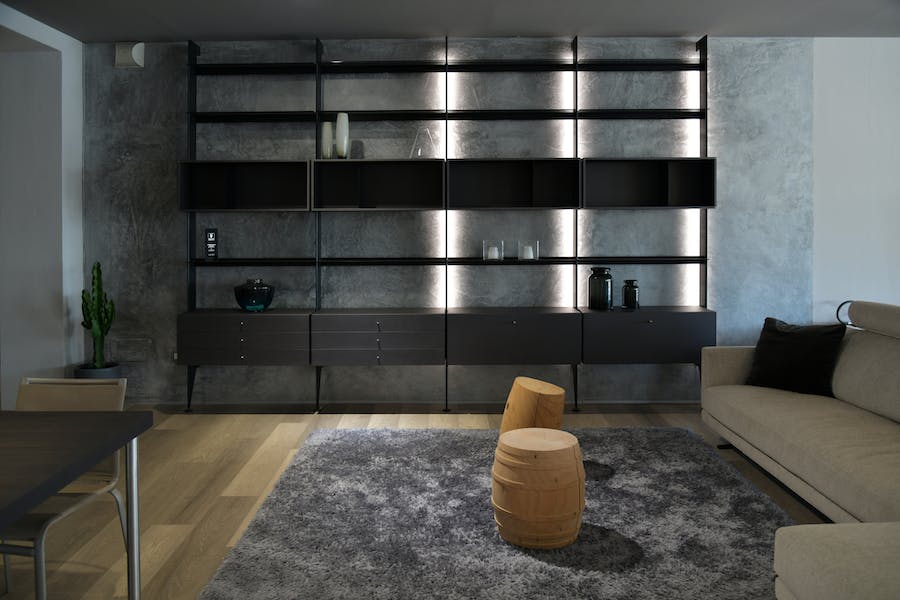Are you considering adding an area rug to your carpeted floor? Many homeowners grapple with this question, wondering whether it’s a decor do or don’t. The debate surrounding whether you can put an area rug over a carpet has puzzled many, but fear not, as this comprehensive guide is here to unravel the mystery. We’ll explore the benefits, considerations, suitable rug types, placement techniques, and maintenance tips to ensure you can make an informed decision and create a harmonious and stylish living space. So, let’s dive into the world of rug-on-carpet decor and find the answers you’ve been seeking.
Can You Put An Area Rug Over Carpet?
Yes, you can certainly put an area rug over the carpet. It’s a common practice in interior design and can bring several advantages to your space. Area rugs can add color, texture, and warmth to a room with wall-to-wall carpeting. They also help define specific areas within a larger space and can reduce noise. However, there are a few considerations to remember, such as choosing the right rug type and size and ensuring it doesn’t slip. Overall, it’s a creative and functional way to enhance your carpeted floor.
Benefits Of Placing An Area Rug Over Carpet
Placing an area rug over a carpet can offer several benefits, enhancing both the aesthetic appeal and functionality of your living space. Here are some key advantages:
Aesthetic Enhancement: Area rugs can instantly transform the look and feel of a room. They add color, pattern, and texture, allowing you to customize your space to match your style and decor preferences. This can make your room feel more inviting and visually appealing.
Comfort And Warmth: Carpeted floors can sometimes feel cold and uninviting, especially in the winter months. An area rug on top of the carpet adds an extra layer of warmth and comfort underfoot. This can make your space cozier and more comfortable, particularly in areas where you frequently walk or sit.
Noise Reduction: Carpets alone can help reduce noise in a room, but adding an area rug can further dampen sound. This is especially useful in high-traffic areas or rooms with hard surfaces, as the rug can absorb and muffle sound, creating a quieter and more peaceful environment.
Define Spaces: Area rugs can delineate specific functional areas within a larger room. For example, you can use a rug to define a seating area in a living room or create a cozy reading nook in a bedroom. This adds visual clarity to the room’s layout.
Protection: Placing an area rug over a carpet can help protect the underlying carpet from wear and tear. It acts as a barrier against spills, stains, and foot traffic, extending the life of your carpet.
Versatility: Area rugs come in various sizes, shapes, and designs. This versatility allows you to switch out rugs seasonally or whenever you want to change the room’s look, providing a cost-effective way to refresh your decor.
Allergy Control: If you or your family members have allergies, using an area rug over the carpet can help trap allergens like dust and pet dander, making it easier to maintain a cleaner and healthier living environment.
Types Of Area Rugs Suitable For Carpets
Several types of area rugs are suitable for placement over carpeted floors. Each type has unique characteristics and advantages, making it important to choose the one that best suits your needs and preferences. Here are some popular types of area rugs suitable for carpets:
Low-pile rugs have shorter and denser fibers, making them an excellent choice for placing over most carpeted surfaces. They lie flat and are less likely to cause tripping hazards or create an uneven surface. Low-pile rugs are ideal for high-traffic areas and are relatively easy to clean, making them a practical option.
Flat-weave rugs are thin and lightweight, making them a versatile choice for layering over carpet. They don’t add much thickness, making them less likely to create an uneven surface. These rugs come in various patterns and colors, adding a touch of style to your room while providing the benefits of an area rug.
While not traditional rugs themselves, rug pads and grippers play a crucial role in ensuring the stability and safety of an area rug placed over the carpet. Rug pads provide cushioning, prevent slipping, and protect the carpet and the rug. Grippers are adhesive or non-slip materials that keep the rug in place and prevent it from shifting.
Rugs made from natural fibers like jute, sisal, or seagrass can be placed over carpets to add a touch of organic warmth and texture. These rugs are durable and can work well in a variety of settings. However, they may have a rougher texture, so it’s essential to choose one that complements your comfort preferences.
These are designed to withstand outdoor conditions but can also be used indoors, including over carpet. They are typically made from synthetic materials that resist moisture and staining, making them a practical choice for areas prone to spills or heavy foot traffic.
How To Properly Place An Area Rug Over Carpet?
Correctly placing an area rug over a carpet requires careful consideration of size, placement, and securing methods to ensure aesthetics and functionality. Here is a detailed guide on how to do it:
Step 1: Measure The Space
Before you start, measure where you intend to place the rug. This will help you determine the appropriate rug size that complements the room’s dimensions. Remember to leave some space around the edges of the rug to expose the underlying carpet for a balanced look.
Step 2: Choose The Right Rug Size
Select an area rug that fits the dimensions you’ve measured. Ideally, the rug should be large enough to anchor the furniture in the designated area, such as under the coffee table and front legs of sofas and chairs in a living room. In dining rooms, the rug should accommodate the dining table and chairs, even when the chairs are pulled out.
Step 3: Clean The Carpet And Rug
Ensure both the carpet and the area rug are clean and free of debris before placement. Vacuum the carpet and shake or vacuum the area rug to remove dust or dirt. A clean surface will help the rug lay flat and prevent abrasive particles from damaging the carpet beneath.
Step 4: Use Rug Tape Or Grippers
To prevent the area rug from slipping or bunching up, consider using rug tape or grippers. These adhesive or non-slip materials can be placed underneath the area rug along the edges or corners to secure it in place. Make sure to follow the manufacturer’s instructions for proper application.
Step 5: Center The Rug
Position the area rug in the desired location, ensuring it’s centered and aligned with the furniture or the focal point. Symmetry and balance are crucial to achieving a visually pleasing result.
Step 6: Layering For Style
If you’re aiming for a layered look, place a smaller rug on top of a larger one for added depth and texture. Ensure that the two rugs complement each other in color and style. Layering can create a cozy and inviting atmosphere.
Step 7: Matching Colors And Patterns
Choose an area rug that complements the color scheme and decor of the room. You can either opt for a rug that harmonizes with the existing carpet or one that adds a contrasting pop of color and pattern to create visual interest. Ensure that the rug’s design and style align with your overall interior design concept.
Bottom Line
Placing an area rug over a carpet is possible and can be a fantastic way to enhance the aesthetics and comfort of your living space. When done correctly, it adds style, warmth, and functionality to your room. However, it’s essential to consider factors like rug type, size, placement, and securing methods to ensure a safe and visually pleasing result. By taking the time to make informed choices, you can enjoy the benefits of layering rugs and create a harmonious and inviting atmosphere in your home.
FAQ’s
Should The Area Rug Match The Carpet Or Contrast With It?
Whether the area rug should match or contrast with the carpet depends on your design preferences. Matching the colors or patterns can create a cohesive look, while contrasting can add visual interest and make the rug a focal point.
Can I Layer Multiple Rugs On Top Of The Carpet?
Yes, you can layer rugs for a stylish and cozy effect. Ensure that the rugs complement each other in size, color, and style. A smaller rug can be placed on top of a larger one to achieve this layered look.
How Do I Clean And Maintain An Area Rug Over The Carpet?
Regular maintenance includes vacuuming the rug and rotating it periodically to prevent uneven wear. Address spills and stains promptly using appropriate cleaning methods and products. Be cautious with heavy furniture, as it can leave indentations on the area rug and the carpet.





















